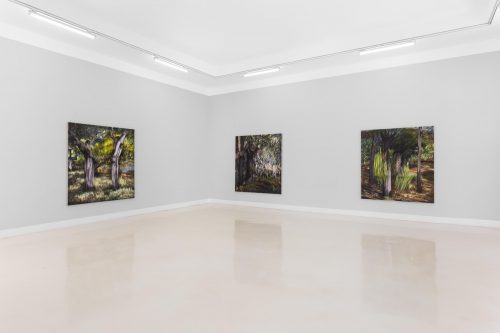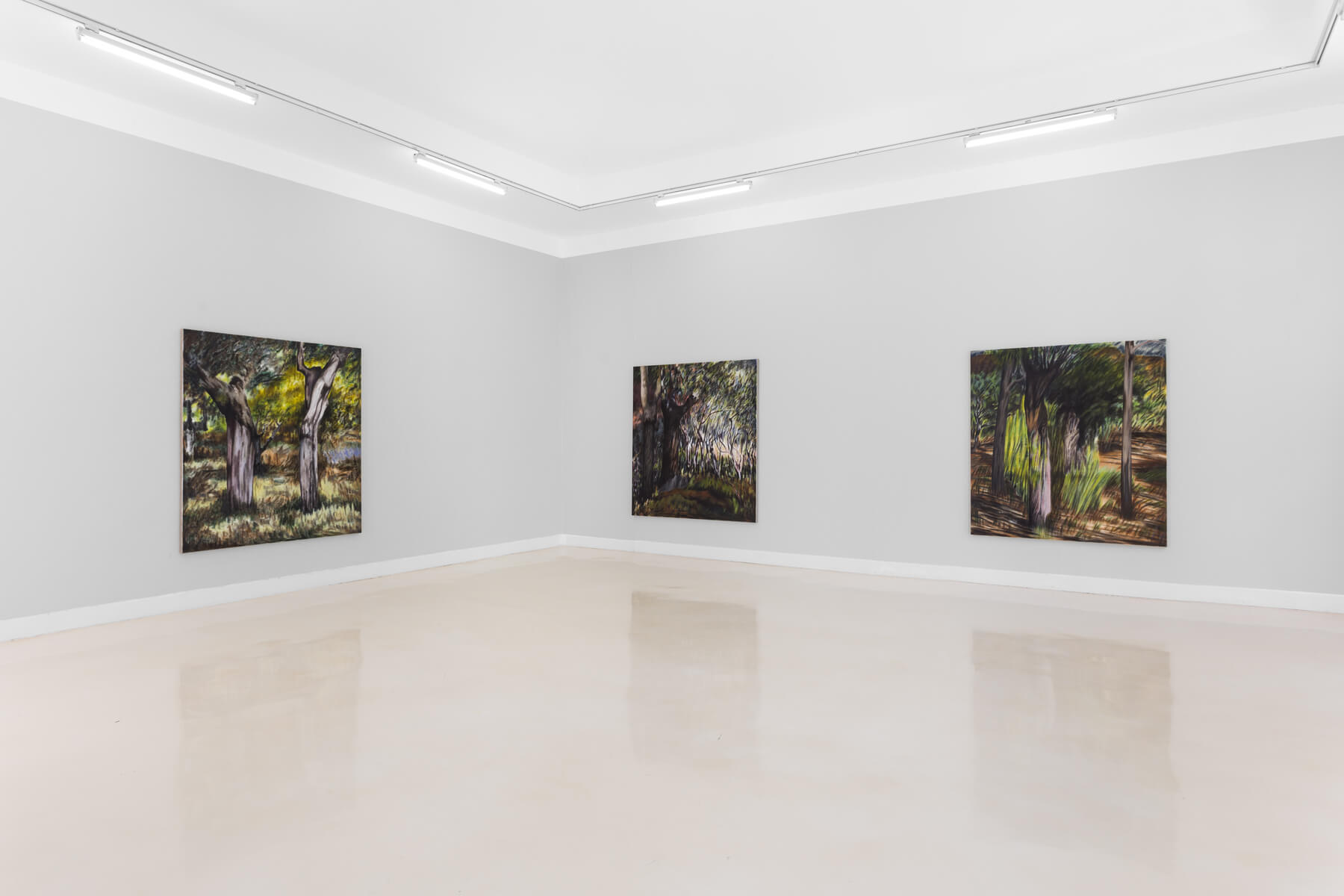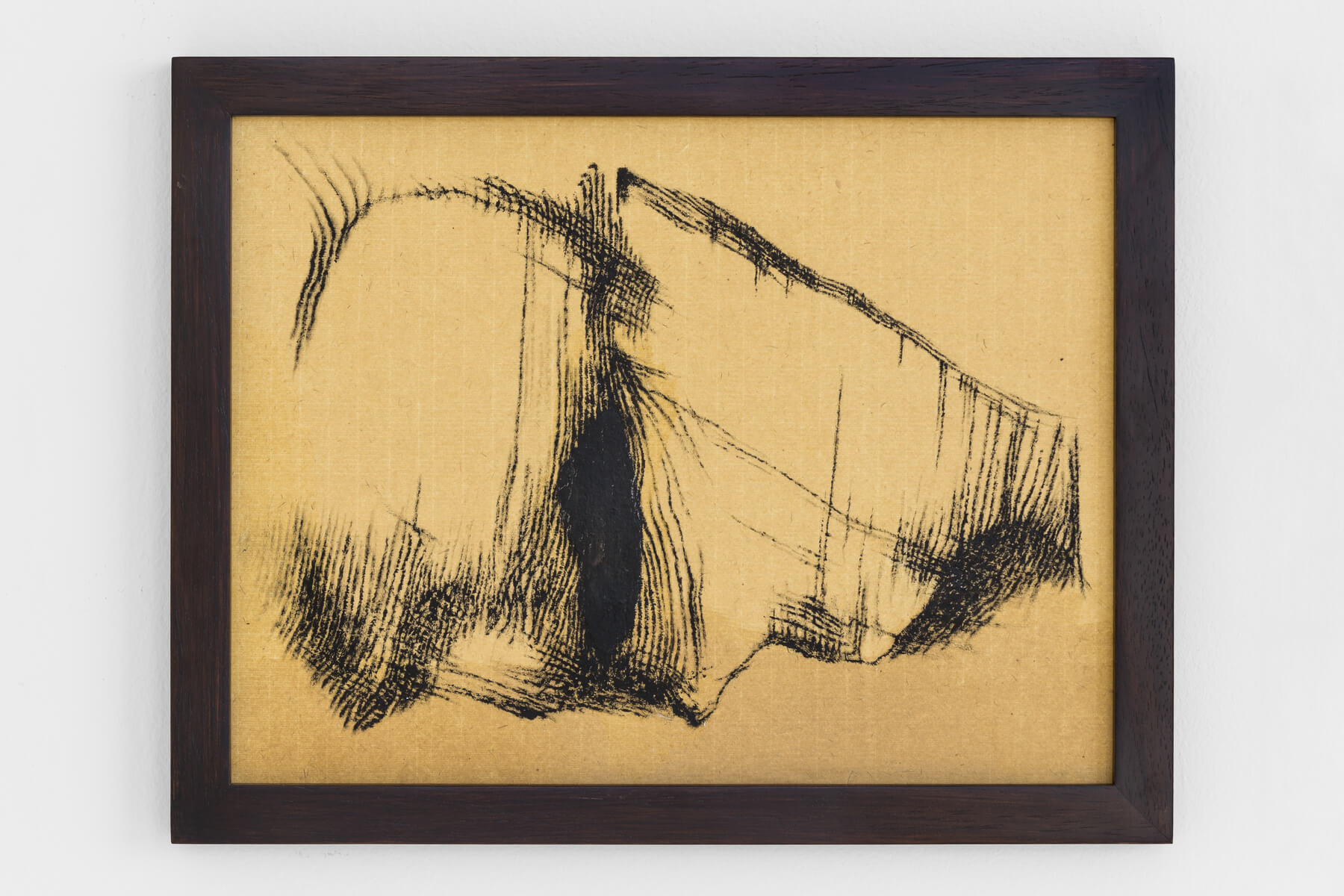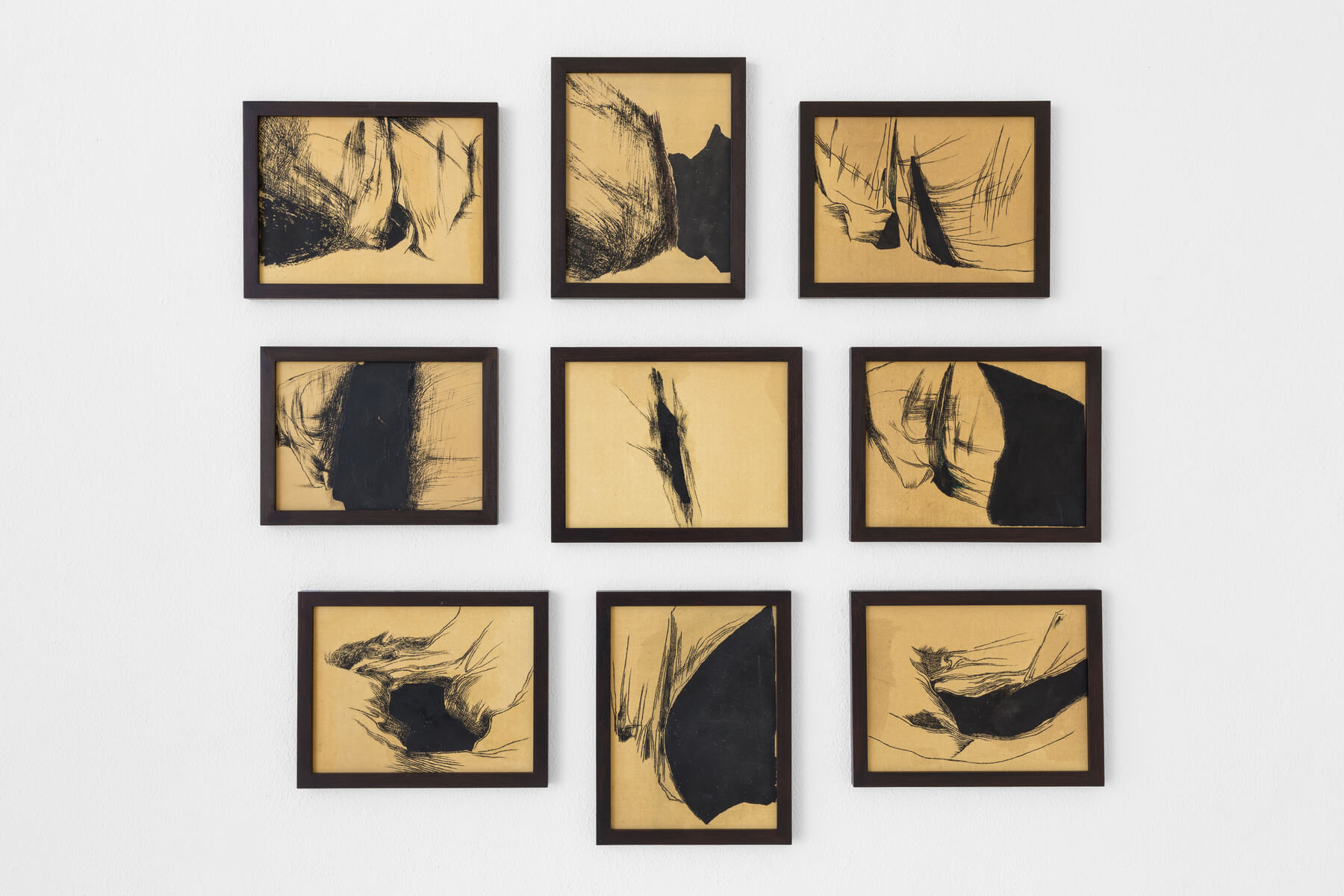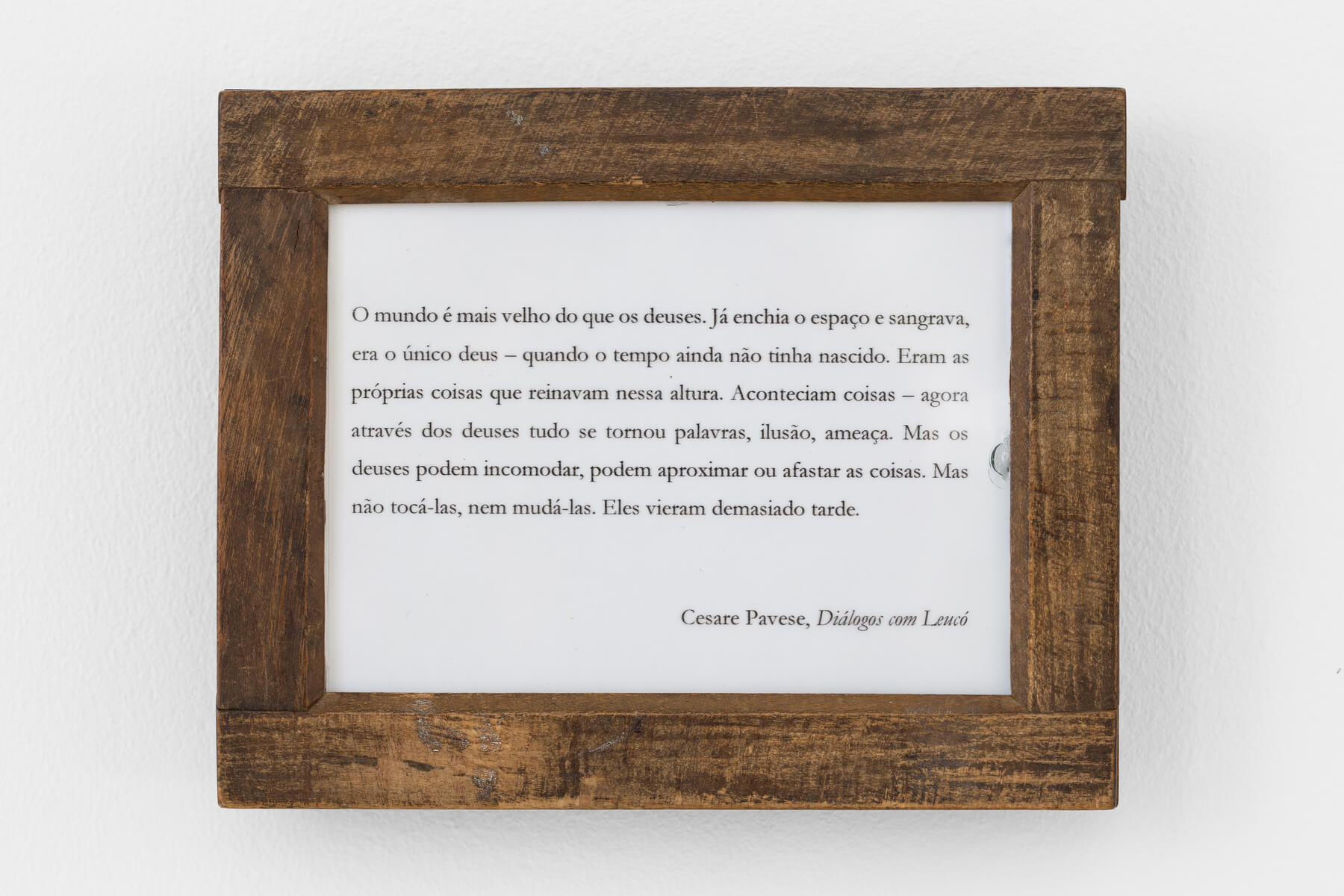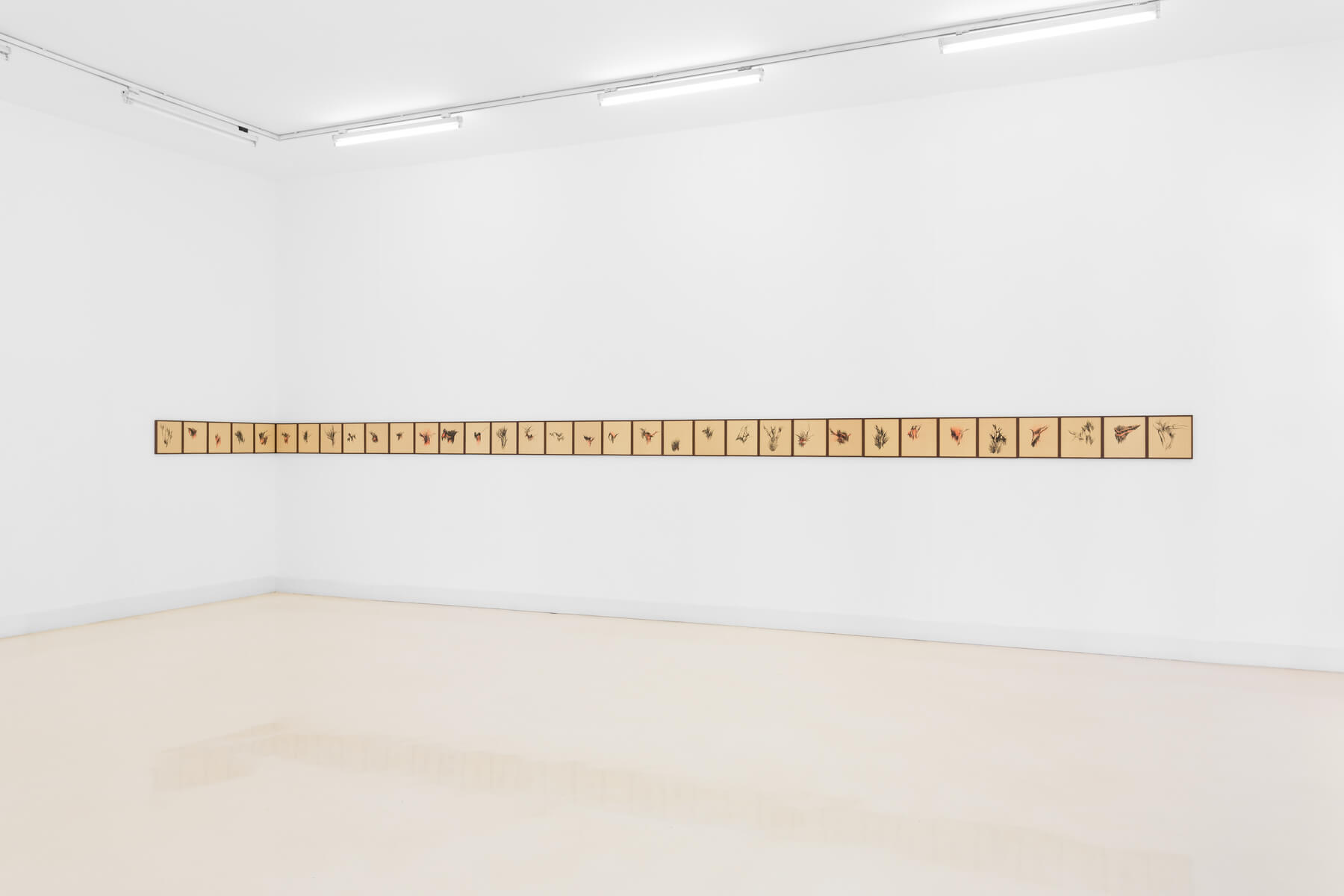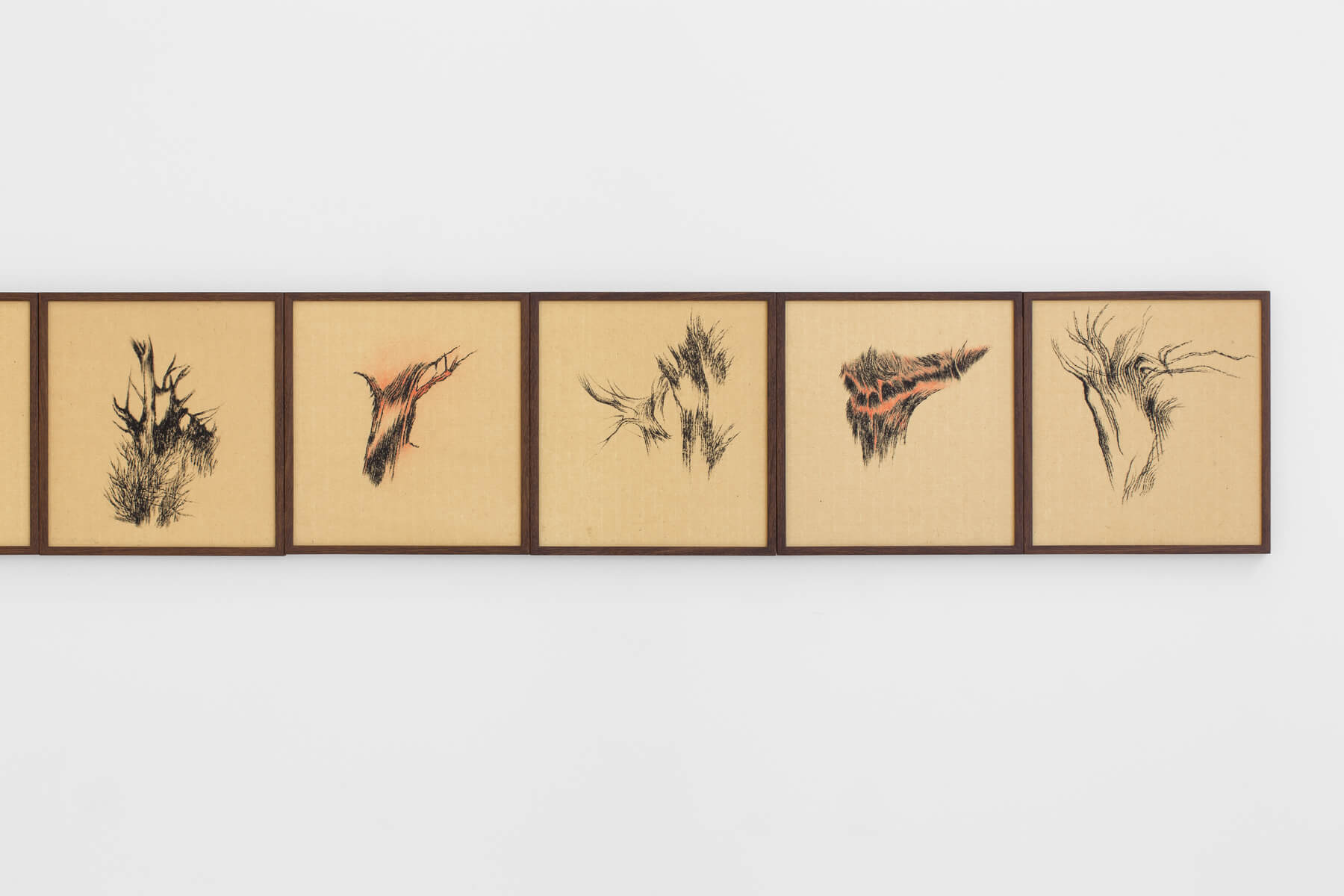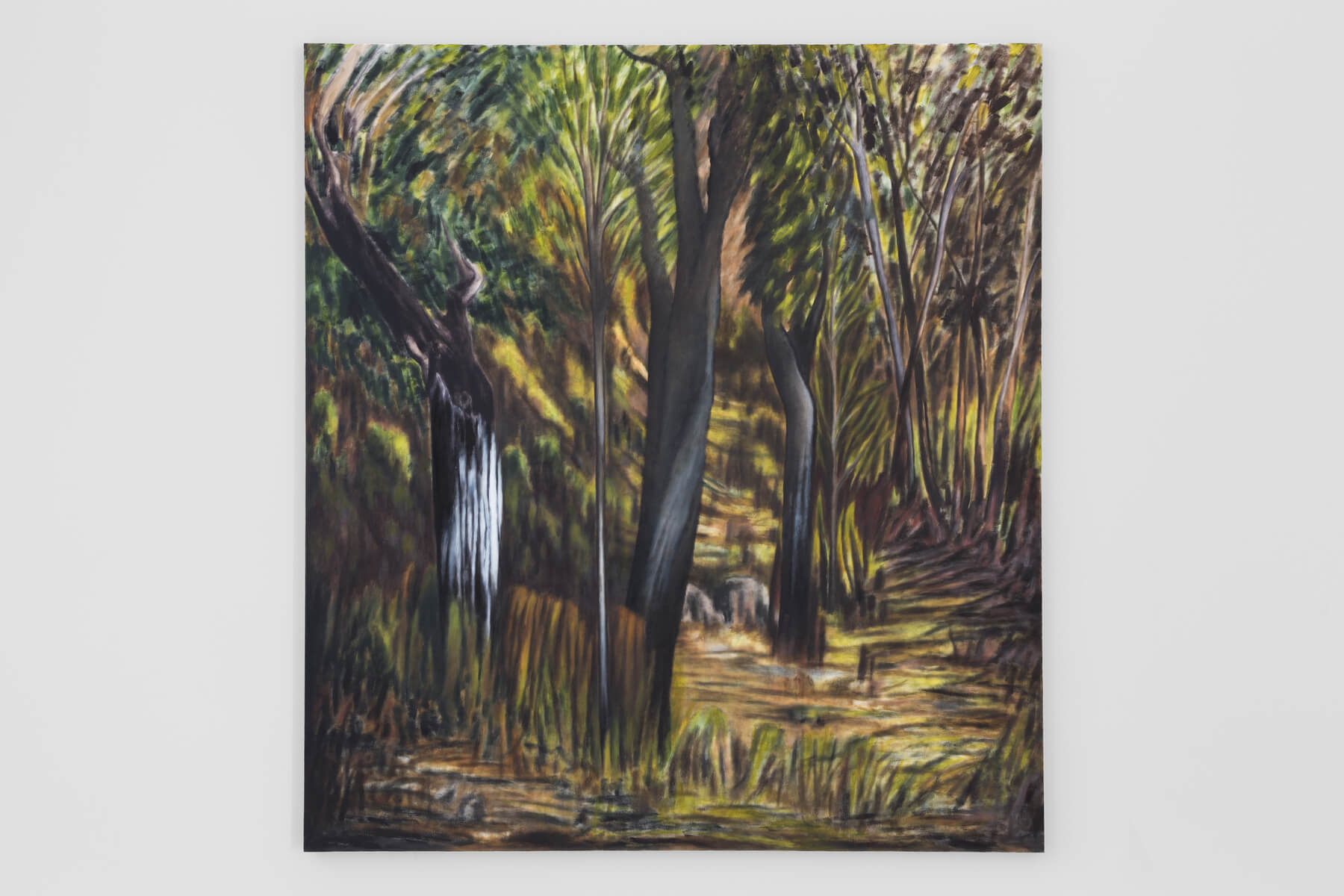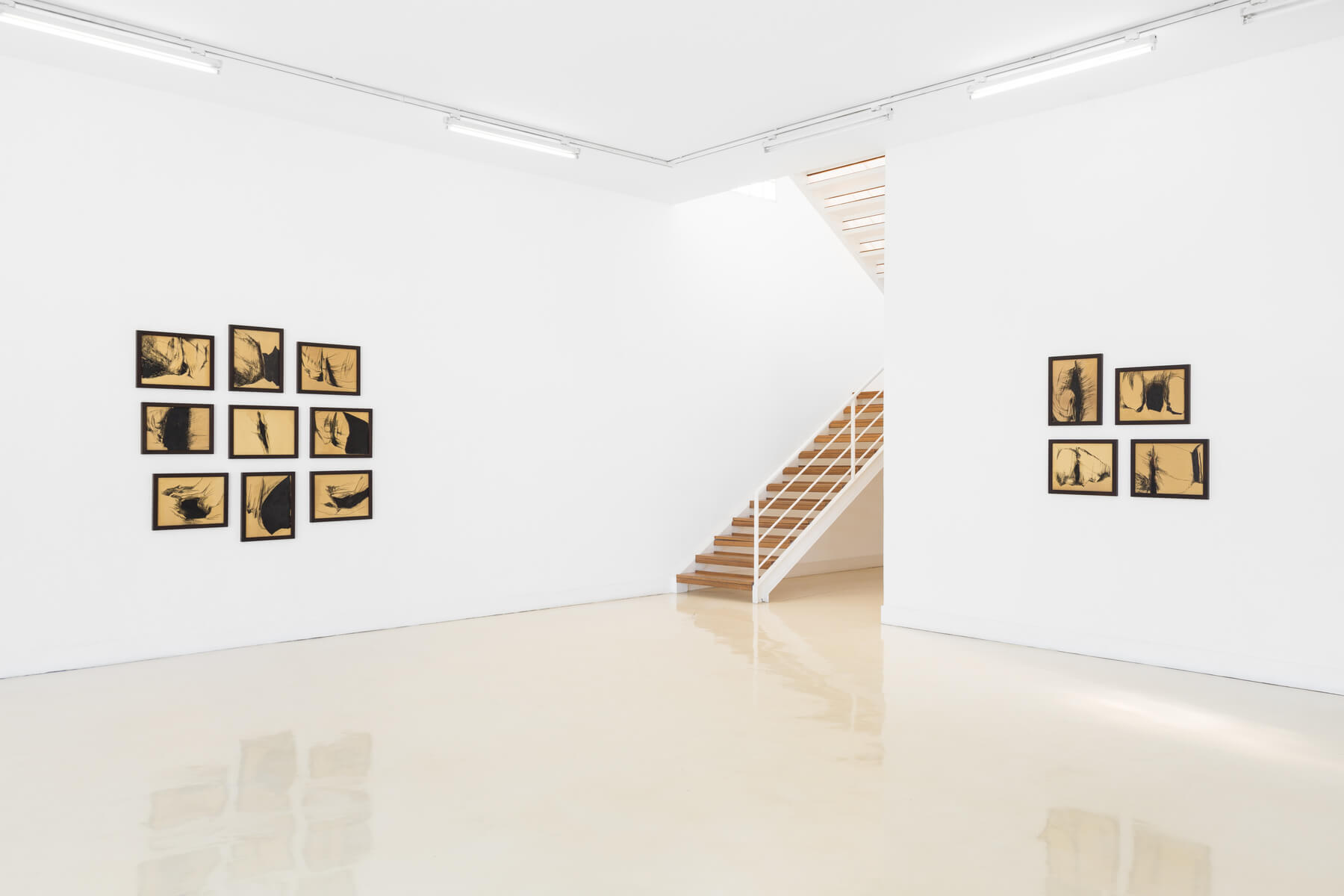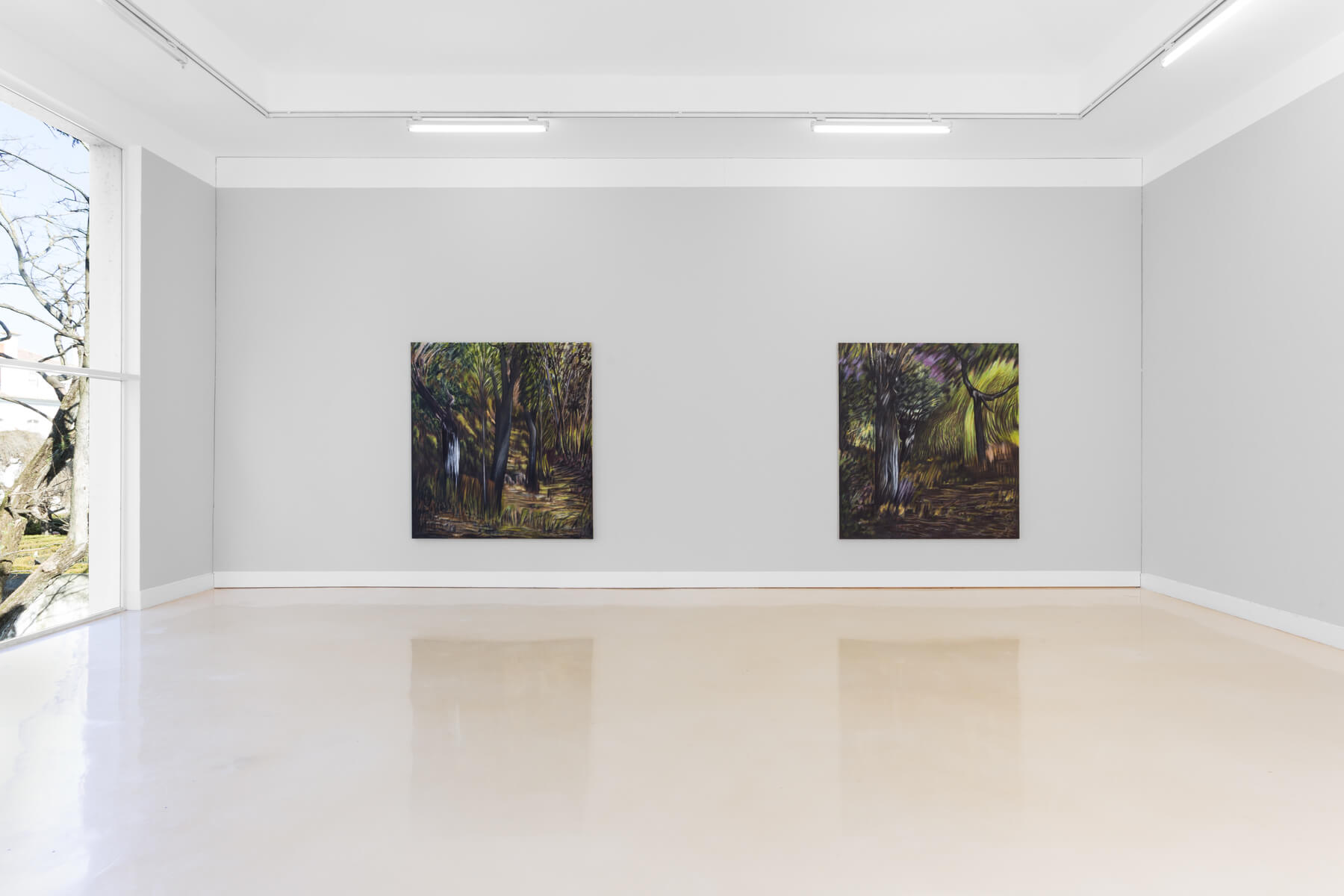– 28.04.2019
The title of this exhibition, chosen by the artist from a text by Cesare Pavese, reveals an artistic programme anchored in the real, while at the same time opening up a pathway of poetic interpretation of the artist’s work. Yet, the clarity with which this exhibition seems to be presented paintings of extremely close viewpoints of trees, closed paths, landscapes with no visible horizon and meticulously observed drawings this disappears when we look without trying to find naturalism of any kind.
There is thus no simple explanation which allows us to describe the creative mechanism that led to these images. The artist’s work (her paintings, her drawings) is developed in permanent tension between contemplation and action, observation and memory… In this equilibrium, it is difficult (if not futile) to seek the primacy of the interior over the exterior, the visual image over the mental image (or vice versa). Maria Capelo’s work results from the crossing of all these different attitudes and choices. Not necessarily in this order, a tree is observed, painted, memorised, transformed, repeated, displaced form, colour, gesture and brushstroke, all have a role to play within these games of staging, in reorganising and reordering the world. In the drawing, the detail of a tree (of a trunk, of a branch) is separated from the whole to which it belongs the degree of proximity and intensity of that observation can transform the drawing of that fragment of tangible reality into a landscape, radically altering the scale of both observation and meaning.
The exhibition occupies the two floors of the Pavilhão Branco in different ways, creating autonomous realities that are unified by the works’ layout, the theme of landscape and the work methodologies. The drawings on the ground floor force us to narrow our gaze, distancing us from the real trees in the garden that threaten to invade our field of vision. The paintings on the upper floor create a suspended landscape fields of dense trees born on the tops of real trees that, from the outside, cross, mirror and multiply in the vast glass panes of the windows.
The drawings are of two different natures: both result from observation (dissection and separation and/or separation/aggregation) of the elements of a whole that is never revealed. Even when assembled (here, in continuous kinetic bands), this fragmentation is maintained, preventing the emergence of any outline with which to reconstitute the whole; one of the series could even deceive us as to its origin, passing from micro to macrocosm, simulating large open landscapes seen from above. Considered individually, the paintings immediately suggest scenography (a backdrop). But they are then concatenated in a continuous whole, perceived as displacements in space and time. Presences of visual and physical potency, the space and time of these paintings do not spring from the path we take through the gallery when contemplating them; it is rather the time and space of another reality: the reality of Nature seen and conquered (appropriated/reordered) through artistic representation; the reality of a landscape traversed and calculated; of a physical and mental reality; a reality of execution (shifts in technique, canvas material, colour and light), perceived from one work to another throughout the series.
In no case is this about the reconstitution of a place or the reproduction of a previous image. Everything is born from Maria Capelo’s close observation of Nature and from her reading of scientific and literary texts on the subject. Observation and reading which serve to confirm that nothing is seen beside that which exists. Yet at the same time, that nothing of what we see exists if it is not also present in each one of these paintings and drawings. Maria Capelo’s commitment thus cuts two ways: it is a commitment to the real, to the truth of Nature as thought and seen through the landscape; and to what is beyond (before and after) the real.
Through the first and second floors of this exhibition, we are swept up in the same wind that troubles leaves, bends trees and comes through the windows, the wind which stops only at the walls before it ricochets off and flings us through the pathways of this world. Maria Capelo does not offer us these images. She forces us to conquer them with the same perseverance with which she made them.
João Pinharanda, curator
– 28.04.2019

